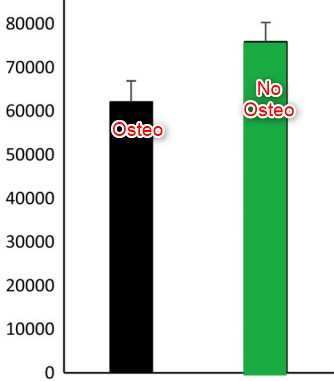More UV during first trimester, less Osteoporosis in offspring
Early lifecycle UV-exposure calibrates adult vitamin D metabolism: Evidence for a developmentally originated vitamin D homeostat that may alter related adult phenotypes.
Am J Hum Biol. 2019 Jun 11:e23272. doi: 10.1002/ajhb.23272.
Lucock M1, Thota R2, Garg M2, Martin C1, Jones P1, Furst J3, Yates Z4, Jablonski NG5, Chaplin G5, Veysey M6, Beckett E1,7.
No Osteo if more UV in first trimester?

total solar irradiance in 90 days post conception
Taller if more UV in first trimester

📄 Download the PDF from Sci-Hub via VitaminDWiki
OBJECTIVES:
Within the Developmental Origins of Adult Disease (DOHaD) model, early life environmental exposures can confer a long-term legacy on human health. This mechanism may be adaptive or maladaptive depending on lifestyle circumstances. This article examines the role of first trimester UV-exposure on late-life vitamin D levels, and potentially related adaptive and maladaptive phenotypes (height and osteoporosis respectively).
METHODS:
Six hundred and forty nine subjects were examined for vitamin D2 and D3 (HPLC) and height (stadiometer). Osteoporosis was assessed with an extensive medical history questionnaire.
RESULTS:
Solar irradiance over the first 90 days postconception correlated positively with late-life vitamin D3 (R2 = .0140; P = .0082; β = .1075), but not vitamin D2 levels. It also correlated positively with female adult height (R2 = .170; P = .0103; β = .1291) and negatively with the occurrence of female osteoporosis (P = .0495). All data were adjusted for age and gender as appropriate (unadjusted data also provided). From a contemporary perspective, vitamin D levels varied significantly according to season of blood sampling as might be predicted (P = .0009).
CONCLUSIONS:
Increased solar irradiance/UV exposure during the first trimester of pregnancy calibrates adult vitamin D metabolism, which is an important hormone in maintaining calcium balance. This may explain how very early lifecycle UV exposure can influence skeletal development (adult height) and modify risk for the skeletal degenerative disorder osteoporosis. The data demonstrate humans are tuned to the world (exposome) in ways we have not yet fully considered, and which are entrained at the earliest phase of the lifecycle.
